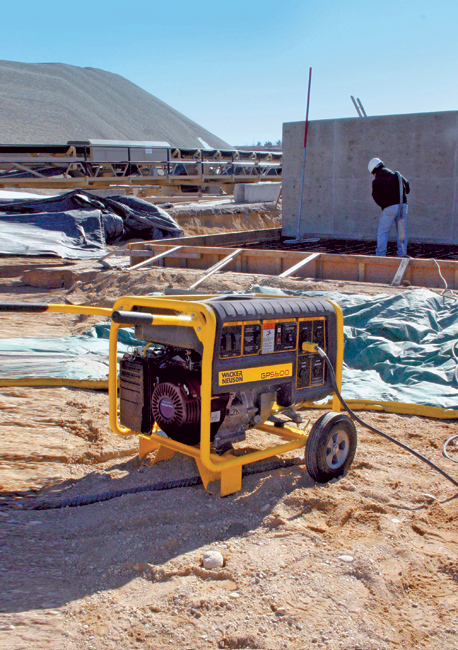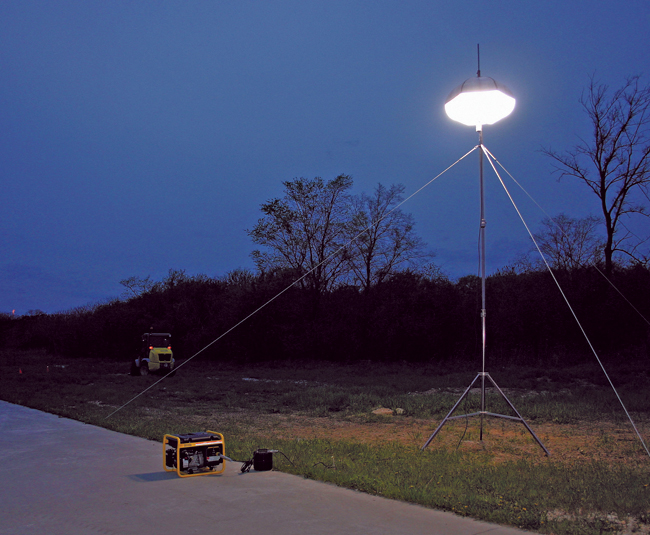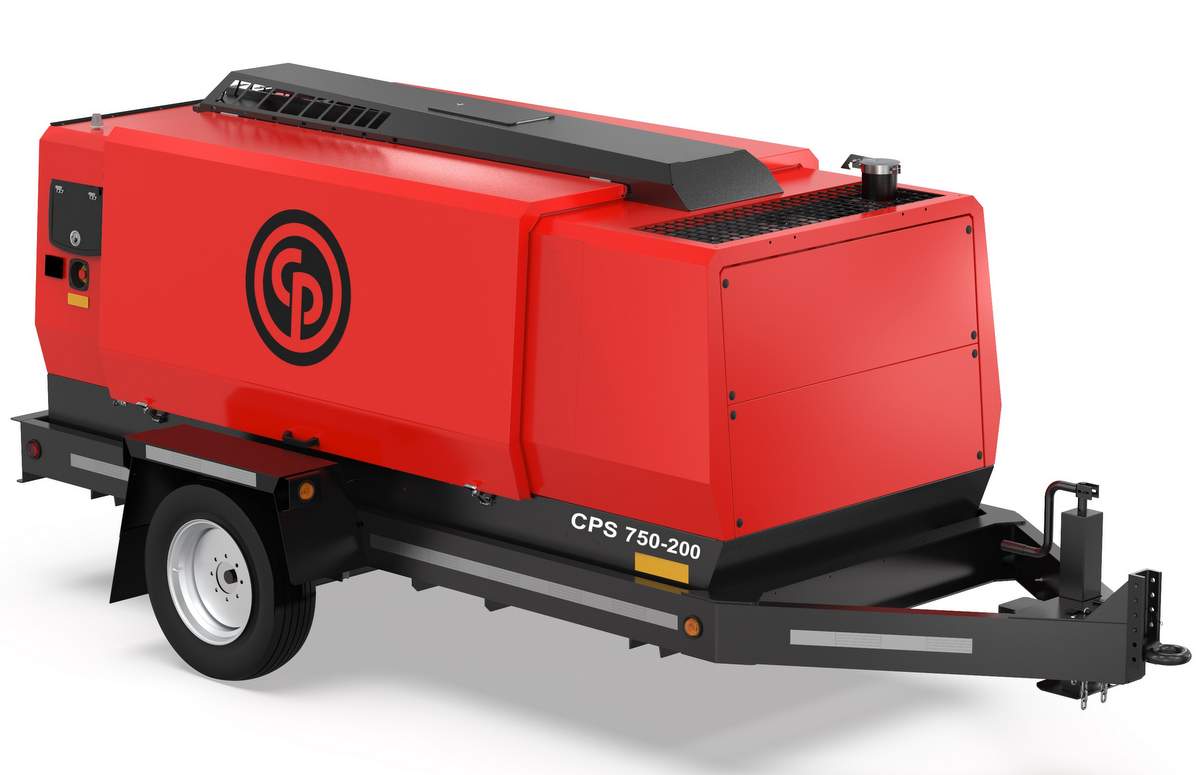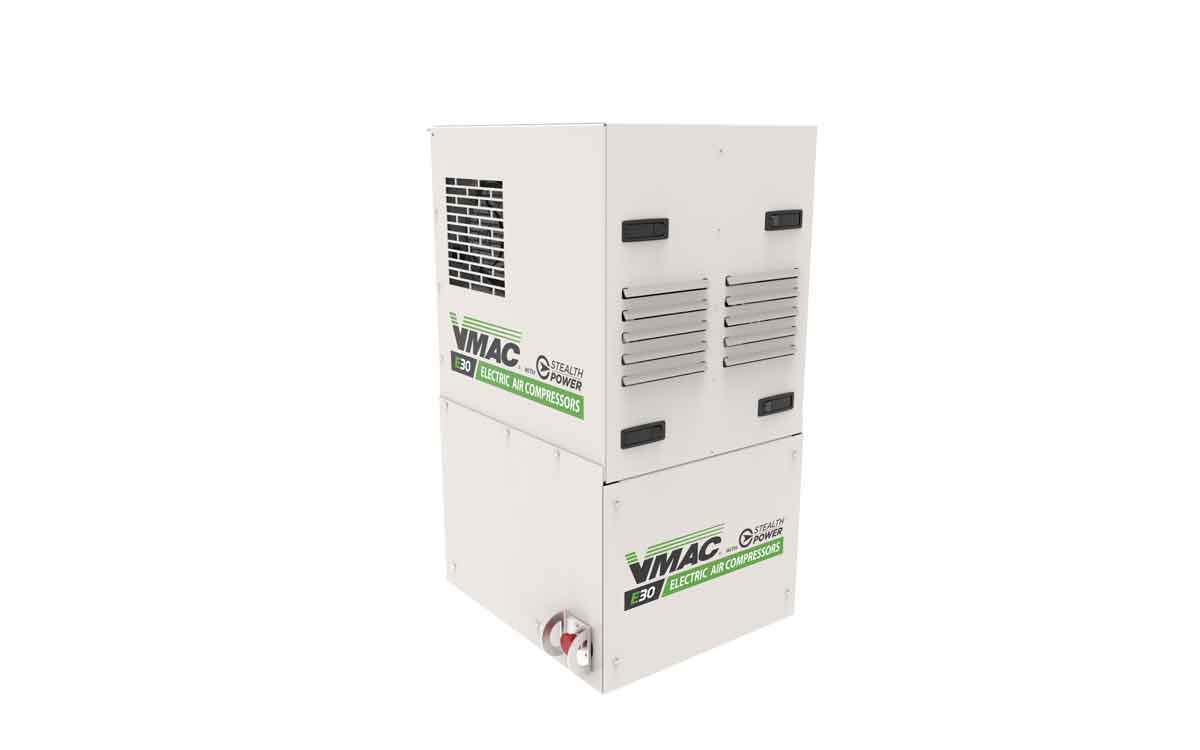Knowledge Equals Power
Power is a general requirement on most jobsites. From drills and saws to support equipment such as compressors and heaters, there is rarely a jobsite that doesn’t need a little help from a portable generator. But with all the makes and models available, how do you know which is the best for your site?
Generator selection can be a bit tricky. It’s more than just choosing the largest, most expensive model, as this often just ends up wasting money and fuel. Conversely, attempting to get by with the smallest and cheapest option will likely lead to both frustration and inefficiency. Many factors must be considered to make the best selection. What’s the total wattage requirement? Is clean, quiet power a necessity? And how many hours of run time will be needed? How often will the generator be run? And of course, you’ll want to get the best value for your dollar while maximizing the unit’s efficiency.

Feeling overwhelmed? No need to worry. It just takes a bit of planning, basic knowledge and some simple calculations to make the proper generator selection.
Coming to Terms
Before generator needs can be determined, basic electrical terms must first be understood. Here are some key terms:
- Current — The volume of electrons that move (flow) per second.
- -Unit = Amps
- Voltage — The electromotive force (pressure) that moves the electrons.
- -Unit = Volts
- Power — The amount of energy available to do work. In electrical circuits, the relationship of volts and amps (pressure flow).
- -Units of Measure = Watts or VA (voltage-amps)
- To calculate power in a single phase circuit: Volts x Amps = Watts
- Running Wattage — Refers to the wattage required to continuously run a tool.
- Starting Wattage — Refers to the wattage required to start a tool. This is typically associated with motor-driven equipment and varies depending on a particular tool’s starting wattage requirement.
Powering Up
When basic terminology is understood, the next step is to take a look at the generator’s use to determine size requirements. First, list all the equipment the generator will likely power. Don’t forget to factor in supportive equipment such as compressors and even computers and radios. Note which pieces won’t need to run at all times, as planning this out can help maximize the generator’s efficiency. It’s also wise to list tools in the order they will be started as this will further help maximize efficiency.
Next, include each piece of equipment’s running wattage requirement. This number is usually located on a tool’s tag or nameplate. Some tools may list power requirements in volts and amps; if this is the case, wattage can easily be calculated by multiplying volts and amps. In addition to the running wattage, another number needs to be considered — and is key in selecting an adequate size generator — starting wattage.
Motor-powered tools often require more wattage to start than they do to run. Starting wattage can be double or even five times a tool’s running wattage. Many operators aren’t aware of starting wattage requirements or if their tools even have a starting wattage requirement. But it’s absolutely crucial to note this number and factor it in when looking at generator size, as it will be necessary to select a generator capable of handling this high, one-time surge of power. After all, if the generator doesn’t have the ability to start the tool, running it is irrelevant.
Keep in mind that all tools will more than likely not need to run at the same time, nor will they all be started at the same time. Although it may take some thought and planning, taking this into consideration and taking the time to think through the process will save you from selecting an oversized generator and wasting efficiency and money.
It’s not necessary to take the total of the equipment’s running wattages and starting wattages. Because each piece will be started separately, they will never all be drawing starting wattage at the same time. The chart on page 38 shows how a typical contractor could apply this concept to his or her individual jobsite. In the example, each piece of equipment is listed in the order it will be started, with both starting and running wattage numbers.
First, determine the continuous running load. Total up all running wattages and arrive at 5,050 W. Next, factor in 10 percent to allow for error or the occasional extra piece of support equipment. The total is 5,555 W. Next, starting wattage needs to be considered, and the “worst case” starting load scenario must be determined. Because the tools will be started separately, only the tool with the highest starting wattage — the saw at 3,500 W — needs to be factored in. Replace the saw’s running wattage with the starting wattage from the previous calculation, and arrive at a new total of 6,050 W.
From here, the “worst case” surge scenario can be determined. Most quality, non-inverter generators can surge to 1.5 times the continuous run rating to start a motor. So take that “worst case” starting scenario, 6,050 W, and divide the number by 1.5 to arrive at 4,033 W. Now be sure to choose a generator that meets both the continuous running load and surge start scenario. The continuous run number of 5,555 W is higher than the surge starting number of 4,033 W, so a generator that produces at least 5,555 W will be the best choice. Coincidentally, the 5,000-W (continuous output) generator is by far the most popular size with contractors.
While taking the time to figure out the sequence of which tools will be running requires a little extra effort, it will be worth it in the end in time and money saved.
For Your Consideration
Beyond the basic requirement of supplying power, other factors need to be considered when making a generator selection. As mentioned, starting wattage often plays the biggest role in generator requirements and some models include features specifically designed to handle these surges in power. A high-quality alternator is key in ensuring the generator can handle starting wattage requirements. Look for a generator with an alternator featuring a separate excitation winding and an automatic voltage regulator (AVR). These features work in conjunction to deliver additional power to the rotor, which aids in starting a heavy load.
An AVR system offers an additional benefit, in that it allows a standard generator to deliver “cleaner” power — meaning consistent voltage and minimum sine wave distortion. This is often crucial for equipment with electronic controls such as computers, battery chargers and tools with timers or integrated electronic motor controls. This system is usually found only on more expensive, high-quality generators due to the cost of these features.

Also, many jobsites, especially residential areas and nighttime operation sites, may have noise restrictions. In these cases, find out the maximum decibel level allowed and keep this in mind during selection, as certain features will contribute to quieter operation. For example, all generators will include a muffler, but many lower-quality models will offer simple stock mufflers. So-called low- or side-mount mufflers will provide significant sound reduction. Additionally, a low-mount air cleaner will further reduce noise levels. Both of these features are typically found on higher-quality models from reputable manufacturers.
It’s also important to assess portability needs. It may be necessary to transport the generator around different areas of the jobsite multiple times a day. Understanding how the generator will be moved is also important in the selection process. Many construction grade generators are equipped with large tires to enable easy transport, often including wheelbarrow-style handles as well. Some models incorporate a central lift point for enhanced transport capabilities, enabling the unit to be lifted via a sling or chain by a crane, telehandler or other mobile piece of equipment. Regardless of how the unit is moved, remember that a generator must always be shut down and given ample time to cool off before touching and moving. Safety first.
Marc Leupi is a product manager of utility products with Wacker Neuson Corp., based in Menomonee Falls, Wis.





Comments are closed here.